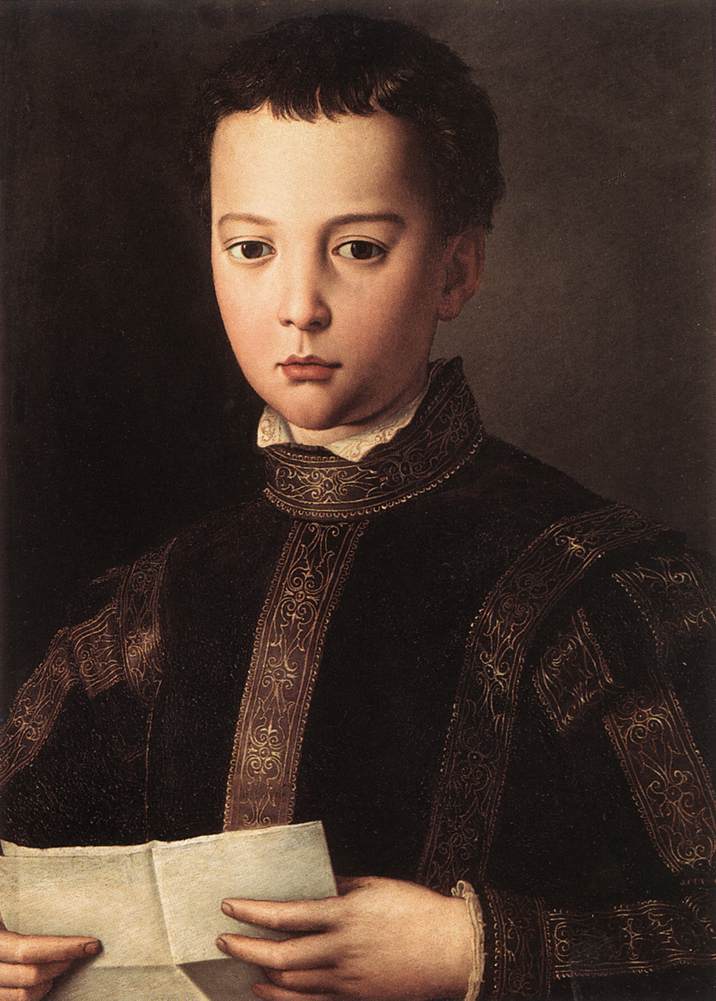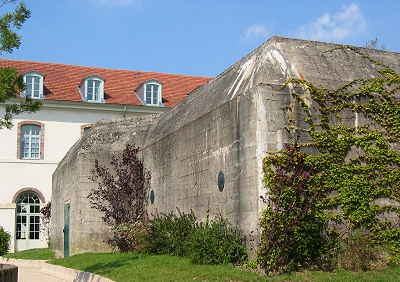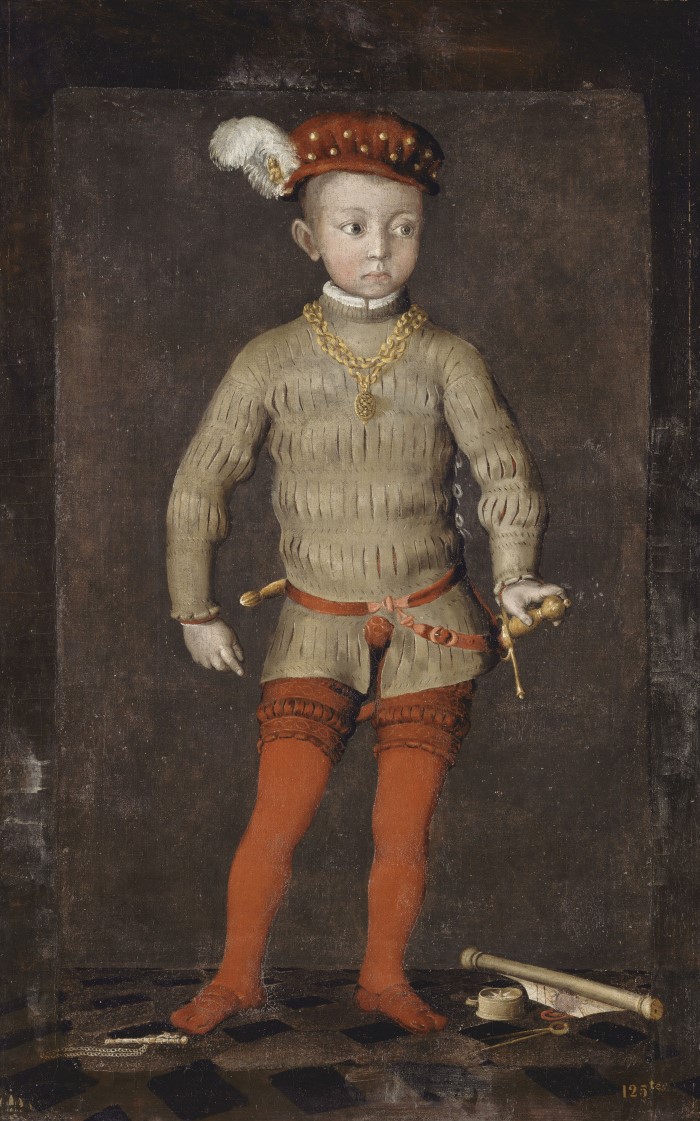|
Concino Concini
Concino Concini, 1st Marquis d'Ancre (23 November 1569 – 24 April 1617) was an Italian politician, best known for being a minister of Louis XIII of France, as the favourite of Louis's mother, Marie de Medici, Queen regent of France. In 1617, he was killed at the behest of the King. Early life Concino was born on 23 November 1569 to family of Giovan Battista Concini and Camilla Miniati in Florence. Concino's family boasted a history of service to powerful figures. His grandfather, Bartolomeo, held the position of first secretary to both Cosimo I and Francesco I. Additionally, Concino's brother, Cosimo, served as an ambassador to both the Holy Roman Empire and the Spanish court. As a younger son, Concino's path was not predetermined. He explored various options, studying at the University of Pisa and even contemplating a religious life as a Capuchin friar. He briefly served under the Cardinal of Lorraine before a pivotal opportunity arose in 1600. During the marriage of Ma ... [...More Info...] [...Related Items...] OR: [Wikipedia] [Google] [Baidu] |
List Of Prime Ministers Of France
The Head of government, head of the government of France has been called the Prime Minister of France, prime minister of France (French: ''Premier ministre'') since 1959, when Michel Debré became the first officeholder appointed under the French Fifth Republic, Fifth Republic. During earlier periods of history, the head of government of France was known by different titles. As was common in European democracies of the 1815–1958 period (the Bourbon Restoration in France, Bourbon Restoration and July Monarchy, the French Second Republic, Second, French Third Republic, Third, and French Fourth Republic, Fourth Republic, as well as the Vichy France, Vichy regime), the head of government was called President of the Council of Ministers (), generally shortened to President of the council (). This should not be confused with the elected office of President of France, president of the French Republic, who, as head of state, appoints the prime minister as head of government. 16th centur ... [...More Info...] [...Related Items...] OR: [Wikipedia] [Google] [Baidu] |
Francesco I De' Medici
Francesco I (25 March 1541 – 19 October 1587) was the second Grand Duke of Tuscany, ruling from 1574 until his death in 1587. He was a member of the House of Medici. Biography Born in Florence, Francesco was the son of Cosimo I de' Medici, Grand Duke of Tuscany, and Eleanor of Toledo. He served as regent for his father Cosimo after he retired from his governing duties in 1564. Marriage to Joanna of Austria On 18 December 1565, Francesco married Archduchess Joanna of Austria, Grand Duchess of Tuscany, Joanna of Austria, youngest daughter of Ferdinand I, Holy Roman Emperor and his wife Anne of Bohemia and Hungary. By all reports, it was not a happy marriage. Joanna was homesick for her native Austria, and Francesco was neither charming nor faithful. In 1578, Joanna died at the age of thirty-one, after falling down a flight of stairs while pregnant with their eighth child. Bianca Cappello Soon after Grand Duchess Joanna had died, Francesco went on to marry his Venetian ... [...More Info...] [...Related Items...] OR: [Wikipedia] [Google] [Baidu] |
Maître D'hôtel Du Roi
The Grand Master of France () was, during the and Bourbon Restoration in France, one of the Great Officers of the Crown of France and head of the "", the king's royal household. The position is similar to that of Lord Steward in England. History The original name of the office was Sovereign Master of the Hotel of the King (French: ''Souverain Maître d'hôtel du Roi), until 1380, then becoming Grand Master of the Hotel of the King (French: ''Grand Maître d'hôtel du Roi''), until 1463, before finally becoming Grand Master of France. The symbol of the Grand Master was a blue baton charged with golden fleur-de-lis, similar to the royal coat of arms of France, capped with a golden representation of the French royal crown. The Grand Master was entitled to bear this symbol of his office in his coat of arms, two being crossed in saltire behind the shield. Duties The position was a successor to the earlier positions of Mayor of the Palace and Seneschal of France. One of the highe ... [...More Info...] [...Related Items...] OR: [Wikipedia] [Google] [Baidu] |
Livre Tournois
The (; ; abbreviation: ₶ or £) was one of numerous currencies used in France in the Middle Ages, medieval France, and a unit of account (i.e., a monetary unit used in accounting) used in early modern France. The 1262 monetary reform established the as 20 , or 80.88 grams of Fineness, fine silver. The was a gold coin of one minted in large numbers from 1360. In 1549, the was decreed a unit of account, and in 1667 it officially replaced the . In 1720, the was redefined as 0.31 grams of pure gold, and in 1726, in a devaluation under Louis XV, as 4.50516 grams of fine silver. It was the basis of the revolutionary French franc of 1795, defined as 4.5 grams of fine silver exactly. Circulating currency In France, the was worth 240 French denier, deniers (the "Tours penny"). These deniers were first minted by the Basilica of Saint Martin, Tours, abbey of Saint Martin, in the Provinces of France, province of Touraine. Soon after Philip II of France seized the counties of ... [...More Info...] [...Related Items...] OR: [Wikipedia] [Google] [Baidu] |
Saint-Germain-en-Laye
Saint-Germain-en-Laye () is a Communes of France, commune in the Yvelines Departments of France, department in the Île-de-France in north-central France. It is located in the western suburbs of Paris, from the Kilometre Zero, centre of Paris. Inhabitants are called ''Saint-Germanois'' or ''Saint-Germinois''. With its elegant tree-lined streets it is one of the more affluent suburbs of Paris, combining both high-end leisure spots and exclusive residential neighborhoods (see the Golden Triangle of the Yvelines). Saint-Germain-en-Laye is a Subprefectures in France, sub-prefecture of the department. Because it includes the Forest of Saint-Germain-en-Laye, National Forest of Saint-Germain-en-Laye, it covers approximately , making it the largest commune in the Yvelines. It occupies a large loop of the Seine. Saint-Germain-en-Laye lies at one of the western termini of RER A, Line A of the Réseau Express Régional, RER. History Saint-Germain-en-Laye was founded in 1020 when King ... [...More Info...] [...Related Items...] OR: [Wikipedia] [Google] [Baidu] |
Dame D'atours
''Dame d'atour'' () was an office at the royal court of France. It existed in nearly all French courts from the 16th-century onward. The ''dame d'honneur'' was selected from the members of the highest French nobility. They were ranked between the ''Première dame d'honneur'' and the '' Dame du Palais''. History At least from Isabeau of Bavaria's tenure as queen, there had been a post named ''demoiselle d'atour'' or ''femme d'atour'', but this had originally been the title of the queen's chambermaids and shared by several people. The office of ''dame d'atour'', created in 1534, was one of the highest-ranking offices among the ladies-in-waiting of the queen and given only to members of the nobility.Nadine Akkerman & Birgit Houben, eds. ''The Politics of Female Households: Ladies-in-waiting across Early Modern Europe'' Leiden: Brill, 2013 The ''dame d'atour'' was responsible for the queen's wardrobe and jewelry and supervised the dressing of the queen and the chamber staff of ''f ... [...More Info...] [...Related Items...] OR: [Wikipedia] [Google] [Baidu] |
Cardinal Mazarin
Jules Mazarin (born Giulio Raimondo Mazzarino or Mazarini; 14 July 1602 – 9 March 1661), from 1641 known as Cardinal Mazarin, was an Italian Catholic prelate, diplomat and politician who served as the chief minister to the Kings of France Louis XIII and Louis XIV from 1642 to his death. He was made a cardinal in 1641. After serving as a papal diplomat for Pope Urban VIII, Mazarin offered his diplomatic services to Cardinal Richelieu and moved to Paris in 1640. After the death of Richelieu in 1642, Mazarin took his place as first minister of Louis XIII, and then of Louis XIV, when he succeeded to the throne in 1643. Mazarin acted as the head of the government for Anne of Austria, the regent for the young Louis XIV, and was also responsible for the king's education until he came of age. The first years of Mazarin in office were marked by military victories in the Thirty Years' War, which he used to make France the main European power and establish the Peace of Westphalia (1646� ... [...More Info...] [...Related Items...] OR: [Wikipedia] [Google] [Baidu] |
Renaissance
The Renaissance ( , ) is a Periodization, period of history and a European cultural movement covering the 15th and 16th centuries. It marked the transition from the Middle Ages to modernity and was characterized by an effort to revive and surpass the ideas and achievements of classical antiquity. Associated with great social change in most fields and disciplines, including Renaissance art, art, Renaissance architecture, architecture, politics, Renaissance literature, literature, Renaissance exploration, exploration and Science in the Renaissance, science, the Renaissance was first centered in the Republic of Florence, then spread to the Italian Renaissance, rest of Italy and later throughout Europe. The term ''rinascita'' ("rebirth") first appeared in ''Lives of the Artists'' () by Giorgio Vasari, while the corresponding French word was adopted into English as the term for this period during the 1830s. The Renaissance's intellectual basis was founded in its version of Renaiss ... [...More Info...] [...Related Items...] OR: [Wikipedia] [Google] [Baidu] |
Belisario Vinta
Belisario Vinta (13 October 1542, Volterra – 15 or 16 October 1613, Florence) was an Italian statesman, knight and diplomat who served the Grand Duchy of Tuscany. Vinta held various high-ranking positions under the Medici family, particularly during the reigns of Ferdinando I and Cosimo II. Early life and education Belisario Vinta was born into a noble family. His parents were Francesco Vinta and Elisabetta Incontri. He was the third of four children, with two elder brothers, Ferdinando and Paolo, and a younger brother, Emilio. His brothers, Emilio and Paolo, also held prominent positions in service of the Medici family, with Paolo Vinta becoming fiscal auditor in 1605. Vinta's education was strongly influenced by his mother, who introduced him to classical literature, including the works of Virgil. He furthered his studies under Dionisio Lippi, who praised him as a "doctissimus adulescens" (Latin for "a very learned young man") for his passion for classical culture. In 156 ... [...More Info...] [...Related Items...] OR: [Wikipedia] [Google] [Baidu] |
Henry IV Of France
Henry IV (; 13 December 1553 – 14 May 1610), also known by the epithets Good King Henry (''le Bon Roi Henri'') or Henry the Great (''Henri le Grand''), was King of Navarre (as Henry III) from 1572 and King of France from 1589 to 1610. He was the first monarch of France from the House of Bourbon, a cadet branch of the Capetian dynasty. He pragmatically balanced the interests of the Catholic and Protestant parties in France, as well as among the European states. He was assassinated in Paris in 1610 by a Catholic zealot, and was succeeded by his son Louis XIII. Henry was baptised a Catholic but raised as a Huguenot in the Protestant faith by his mother, Queen Jeanne III of Navarre. He inherited the throne of Navarre in 1572 on his mother's death. As a Huguenot, Henry was involved in the French Wars of Religion, barely escaping assassination in the St. Bartholomew's Day massacre. He later led Protestant forces against the French royal army. Henry inherited the thro ... [...More Info...] [...Related Items...] OR: [Wikipedia] [Google] [Baidu] |
Charles Of Lorraine (bishop Of Metz And Strasbourg)
Charles of Lorraine (1 July 1567 – 24 November 1607) was the Roman Catholic Bishop of Metz (from 18 July 1578) and Strasbourg (from 1 July 1592). Pope Sixtus V made him a cardinal-deacon in 1589, and in 1591 gave him the titular church of Sant'Agata dei Goti. He regularly served as stadtholder (regent) for his father in the duchies of Lorraine and Bar."Lorraine, Charles de" . ''Saarländische Biografien''. Charles was born at Nancy, the capital of Lorraine. He was the second son of Duke and [...More Info...] [...Related Items...] OR: [Wikipedia] [Google] [Baidu] |
Capuchin Friar
The Order of Friars Minor Capuchin (; postnominal abbr. OFMCap) is a religious order of Franciscan friars within the Catholic Church, one of three " First Orders" that reformed from the Franciscan Friars Minor Observant (OFMObs, now OFM), the other being the Conventuals (OFMConv). Franciscans reformed as Capuchins in 1525 with the purpose of regaining the original Habit (tunic) of St. Francis of Assisi and also for returning to a stricter observance of the rule established by Francis of Assisi in 1209. History Origins The Order arose in 1525 when Matteo da Bascio, an Observant Franciscan friar native to the Italian region of Marche, said he had been inspired by God with the idea that the manner of life led by the friars of his day was not the one which their founder, St. Francis of Assisi, had envisaged. He sought to return to the primitive way of life of solitude and penance, as practised by the founder of their Order. His religious superiors tried to suppress these in ... [...More Info...] [...Related Items...] OR: [Wikipedia] [Google] [Baidu] |







